Vermont's East Palestine: a look back at the 2007 Middlebury train derailment
MIDDLEBURY ― Around 2:15 p.m. on Oct. 22, 2007, David Shaw,, who was then assistant chief of the Middlebury Fire Department, received a call about a train derailment in downtown Middlebury. As Shaw rushed to the fire station, he saw a large black plume of smoke rising in the sky. Little did he know that he was about to walk into the longest and one of the riskiest operations of his 43-year career.
The 2007 Middlebury incident was the largest train derailment Vermont has seen over the past four decades in terms of the number of train cars derailed. It was also the only time since 1988 that a train derailment in Vermont resulted in the release of hazardous materials, according to data from the Federal Railroad Administration.
"Nobody in this state had seen a freight incident like we had in downtown Middlebury," Shaw said.
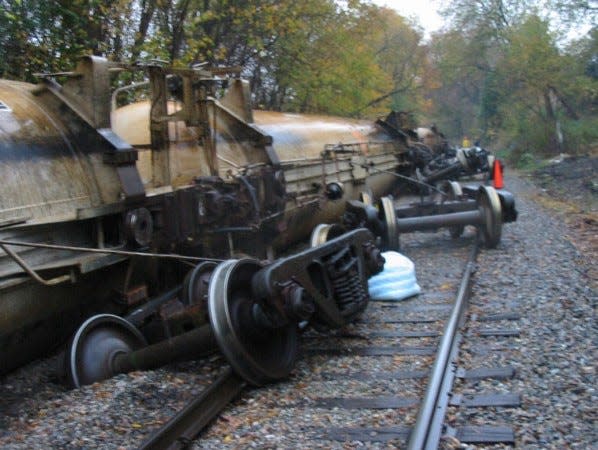
Train derailments in Vermont: a broad view
While the Middlebury incident was Vermont's biggest train derailment in recent history, it was not the only one.
From 2006-2022, there have been a total of 31 train derailment incidents in Vermont, at least seven of which involved train cars carrying hazardous materials, according to data from the Federal Railroad Administration.
"[D]erailments involving hazmat are rare, and derailments overall have declined compared to previous decades," William Wong of the Federal Railroad Adminsitration said. "However, even one of these incidents is one too many, and there is still work to do to further cut down on the over 1,000 derailments that occur annually."
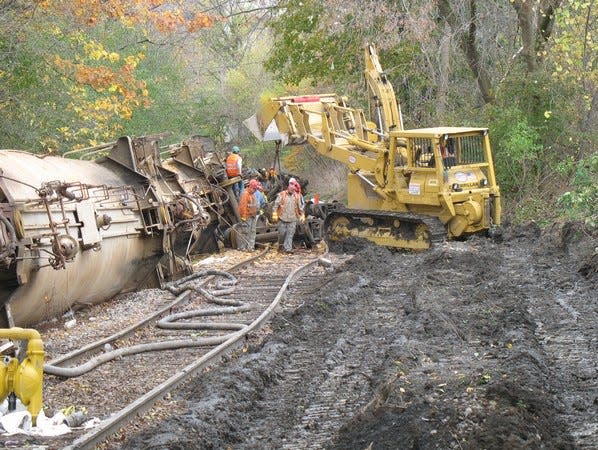
The most common hazardous materials carried by trains in Vermont are heating fuels, including propane and fuel oils, according to Patrick McLaughlin, chief of Vermont's state Hazardous Materials Response Team.
The dangers of train derailments involving hazardous materials came into the national spotlight on Feb. 3, 2023, when 38 cars of a freight train carrying hazardous materials derailed in East Palestine, Ohio, causing a fire that released toxic chemicals into the air.
An explosion avoided
The Environmental Protection Agency records the start of the Middlebury incident at around 2:15pm on Oct. 22, 2007, when 15 train cars carrying a total of 390,000 gallons of gasoline toppled on their sides. Five of those cars leaked gasoline into the surrounding soil and Otter Creek, according to Vermont Department of Fish & Wildlife Commissioner Christopher Herrick.
"I was chief of the Hazmat team for 17 years," Herrick said. "This is perhaps the most significant event − certainly the largest derailment I ever went to."
Every fire department in Addison County responded to the scene, as well as the Vermont HAZMAT Team, Vermont Rail System, Coast Guard, Red Cross, and more. Police evacuated about 500 people to an emergency shelter.
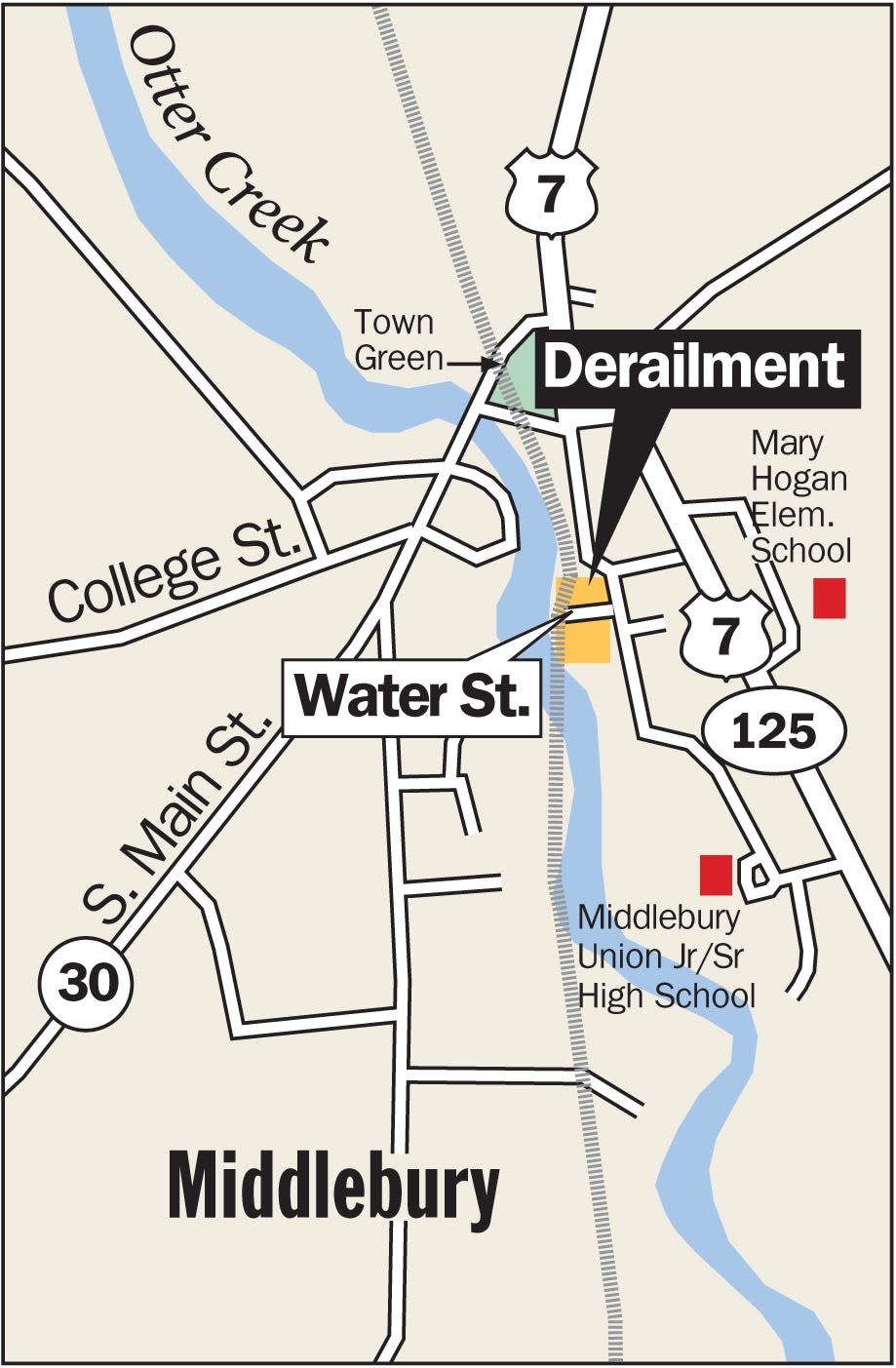
Two fires broke out on the trains. While these fires were small, if they had reached the gasoline tank, it could have caused an explosion.
"I can't stress enough just how dangerous it was," Herrick said. "The explosive power of the aggregate amount of gasoline equaled that − I believe it was 64 million sticks of dynamite."
The train cars were directly behind a residential area which had not yet been evacuated, so the situation could have turned deadly.
At that point, Shaw had to make a decision: should he and his crew attempt to put out the fires, knowing that the train cars could explode in their face at any moment? Their answer was yes.
"We had made the determination to fight the fire, knowing that if we didn't do it right, it probably was going to be the last fire we ever fought," Shaw said.
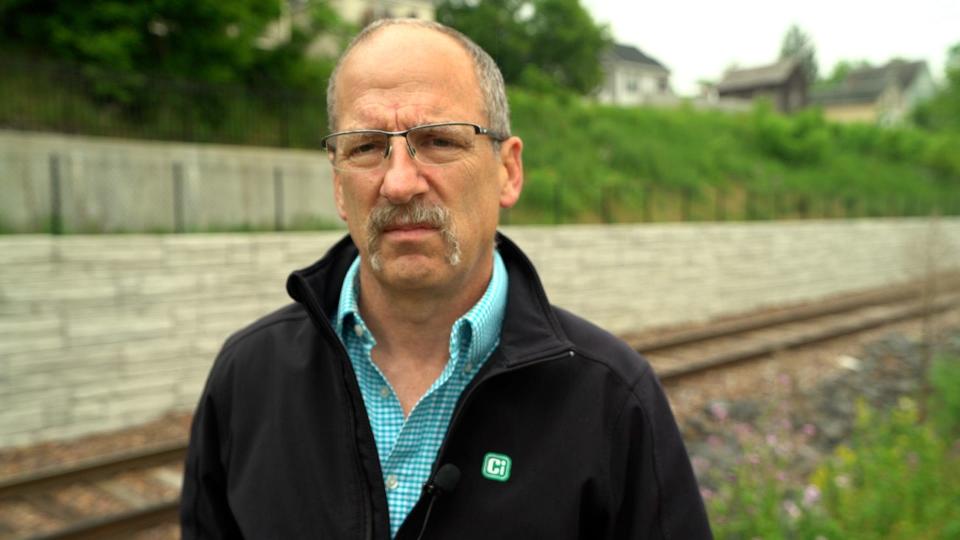
Environmental pollution
After about 15-20 minutes, Shaw and his team had extinguished the fires with no injuries or casualties.
At that point, Shaw and his team turned their attention to the gallons of gasoline pouring into Otter Creek. What followed was a grueling two-and-a-half-day operation of pumping the gasoline out of the rail cars into a tractor-trailer.
By the end of the cleanup operation, the train cars had leaked about 6,000-10,000 gallons of gasoline − most of which was safely recovered, according to Herrick.
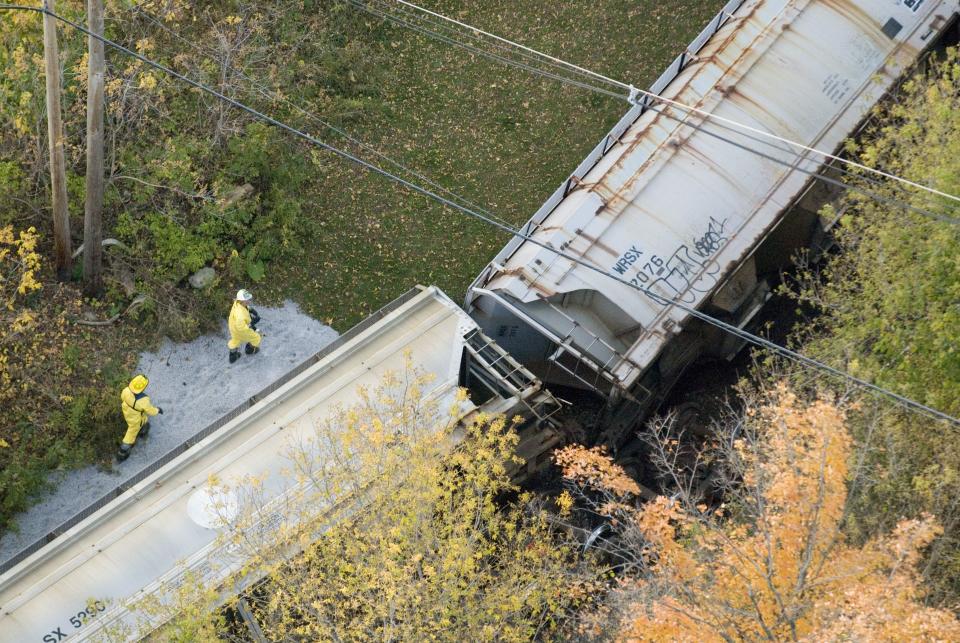
"If this spill hadn't been handled as well as it was, I think the potential for a huge fish kill with significant," Herrick said. "So we averted a real dangerous situation."
About 800-1,800 gallons of gasoline were released into the surrounding environment and never recovered, according to Vermont Agency of Natural Resources Spill Program Manager Tim Cropley. Cropley said that the gasoline that entered Otter Creek dissipated quickly, and by Nov. 8 of that year, samples of the creek showed water quality just below the standard.
Remediation of the soil lasted for 14 days, according to the Department of Environmental Conservation's hazardous site manager Matthew Becker.
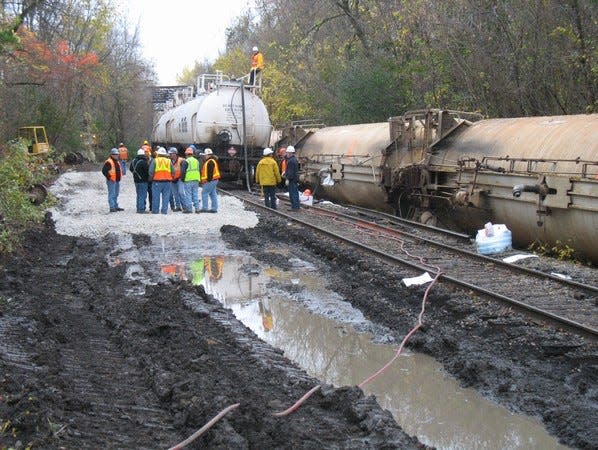
A predictable catastrophe
Shaw, now chief of the Middlebury Fire Department, is proud of his team for how well they handled the derailment, but voiced criticism that more wasn't done to prevent this disaster in the first place.
"We, emergency services in Middlebury, knew that the rails were in deplorable shape," Shaw said. "We watched the trains come through on a daily basis, and you would see flex in the rail of two to three inches, which is a lot of flex in the rail."
As trains pass over the top of railways, it's normal for the rail to flex up and down slightly. But in Middlebury in 2007, the railway was flexing too much, according to Shaw.
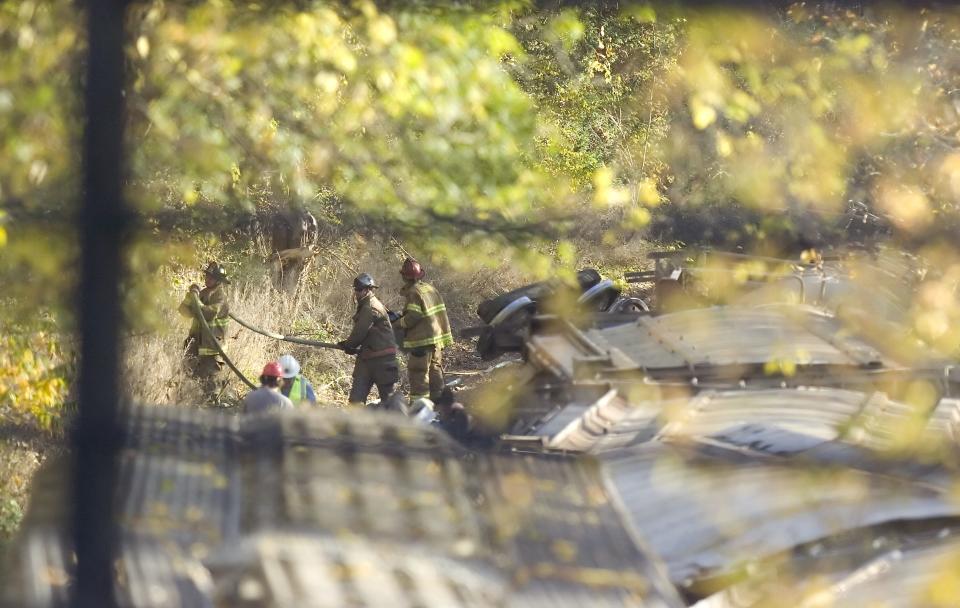
"It was huge. You could see the entire rail moving on both sides as [a train] went through," Shaw said. "It was not surprising to us that this event happened in our area. The rail basically broke apart and caused a chain reaction, and the cars toppled over."
Damaged or malfunctioning train tracks are the most common cause of train derailments, according to the Federal Railroad Administration.
Contact April Fisher at amfisher@freepressmedia.com. Follow her on Twitter: @AMFisherMedia
This article originally appeared on Burlington Free Press: Have trains carrying hazardous materials derailed in Vermont before?

